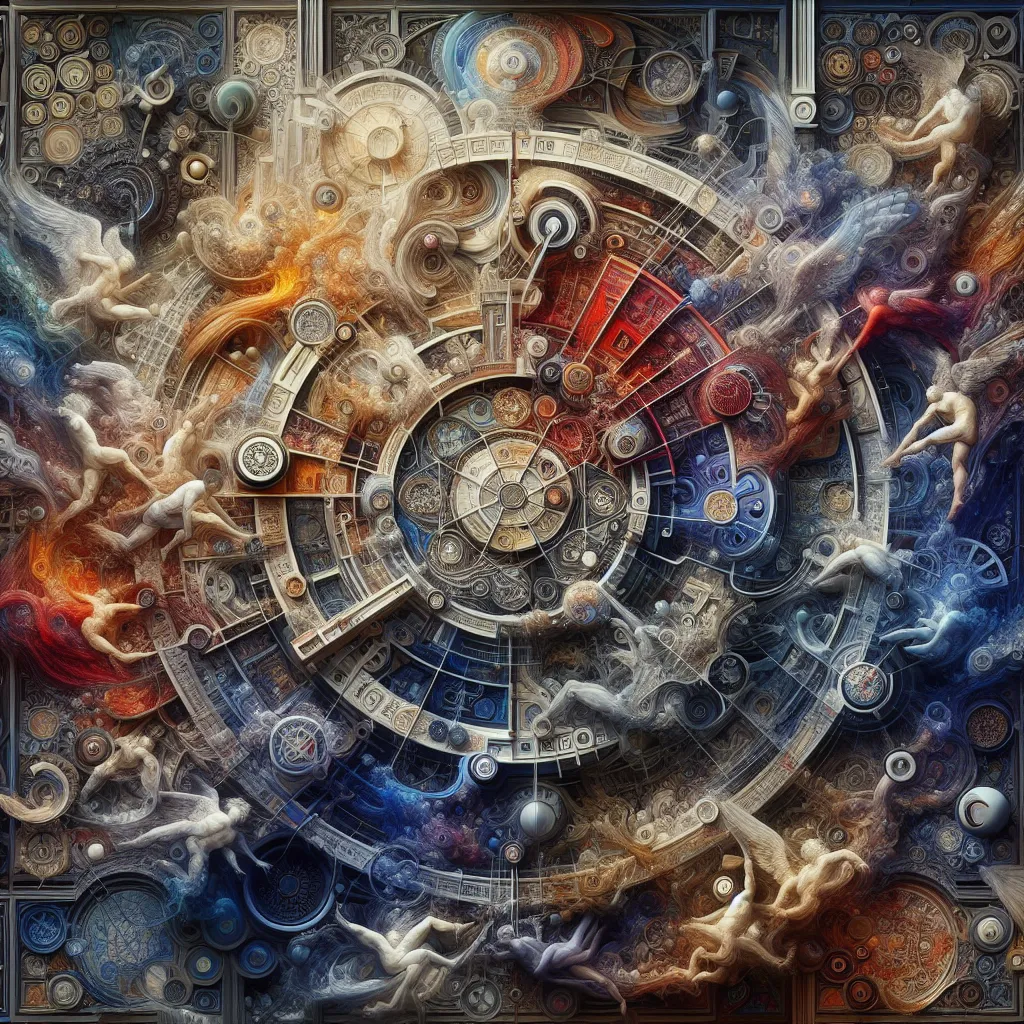
- Published on
- Authors

- Name
- You
The Paradigm Shift: Embracing Multiple Belief Systems in Chaos Magick
Chaos Magick, a path that defies stringent definitions, offers a tapestry of dynamic practices integrating science and mysticism. Central to its ideology is the concept of paradigm shifting—the art of adopting and discarding belief systems as needed for magickal operations. This article delves into the intricacies of paradigm shifting, its historical context, and practical applications.
What is Paradigm Shifting?
At its core, paradigm shifting involves the conscious and deliberate change of belief systems. Unlike traditional magickal systems that often adhere to fixed doctrines, Chaos Magick empowers practitioners to fluidly transition between various belief structures to accomplish their goals.
Historical Context
The seeds of Chaos Magick were sown in the late 20th century by magicians like Peter J. Carroll and Ray Sherwin, who merged elements of occult traditions with radical, scientific thinking. The movement drew on practices from diverse traditions—Kabbalah, Taoism, Science Fiction, and even Quantum Physics. These underpinnings allowed Chaos Magicians to view belief as a tool, not a strict necessity.
The Science Behind Belief Systems
Neuroplasticity and Belief
The neurological basis for paradigm shifting lies in neuroplasticity—the brain's ability to reorganize itself by forming new neural connections. This adaptability supports the idea that belief systems can be fluid rather than rigidly rooted.
Quantum Theory
Quantum Mechanics introduces concepts like the observer effect, where the act of observation alters the state of the observed. This principle aligns with the Chaos Magician's perspective that intent and belief can shape reality.
Practical Applications
Ritual Table: A Comparative Overview
| Belief System | Purpose | Adoption Techniques | Discarding Techniques |
|---|---|---|---|
| Norse Paganism | Invoking strength and courage | Runes, Galdr chants | Purification rituals, symbolic burning |
| Hermeticism | Seeking wisdom and enlightenment | Tarot, Alchemical symbolism | Ritual banishment, mental deprogramming |
| Eastern Mysticism | Achieving inner peace and balance | Meditation, Mantras | Disassociation, mindfulness exercises |
| Scientific Rationalism | Enhancing logic and clarity | Hypotheses, Empirical testing | Rational critique, Debunking myths |
Chaos Magicians employ rituals designed to fully immerse themselves in a chosen belief system. For instance, in adopting Norse Paganism, one might use Runes and Galdr chants to invoke the energy of Odin. When the belief system is no longer required, purification rites or symbolic acts such as burning runes can be performed to discard the beliefs.
Case Studies
The Digital Alchemist
One modern example is the practice of "digital alchemy," where practitioners use software algorithms and coding languages as their magickal symbols. By adopting the belief that code is a potent form of intent manifestation, magicians can create digital talismans and sigils.
The Quantum Shifter
Another case involves magicians who adopt Quantum Theory as a belief system. They work with the notion that reality is a probability field influenced by consciousness. Rituals often involve scientific simulations and visualizations of quantum states to achieve desired outcomes.
Conclusion
Chaos Magick, through the lens of paradigm shifting, offers a vibrant, flexible framework that harmonizes ancient practices with contemporary science. This fluidity not only enhances magickal efficacy but also provides a broader understanding of reality itself, unbound by conventional beliefs.
Embracing multiple belief systems allows Chaos Magicians to become the ultimate architects of their experiential worlds, where belief is not a shackle but a versatile tool.
References:
- Carroll, Peter J. Liber Null & Psychonaut. Weiser Books, 1987.
- Einstein, Albert et al. Quantum Mechanics. Princeton University Press, 1951.
- Sherwin, Ray. The Book of Results. Mandrake of Oxford, 1985.
For further reading, explore the pioneering works that blend magick and science, creating a rich narrative for future magicians.
